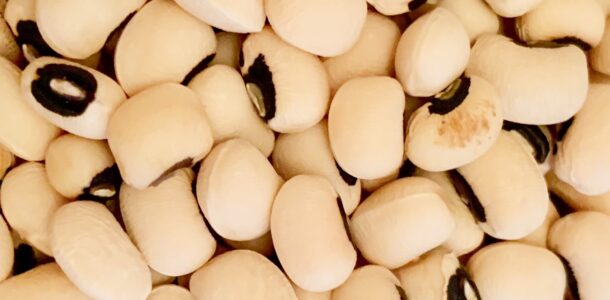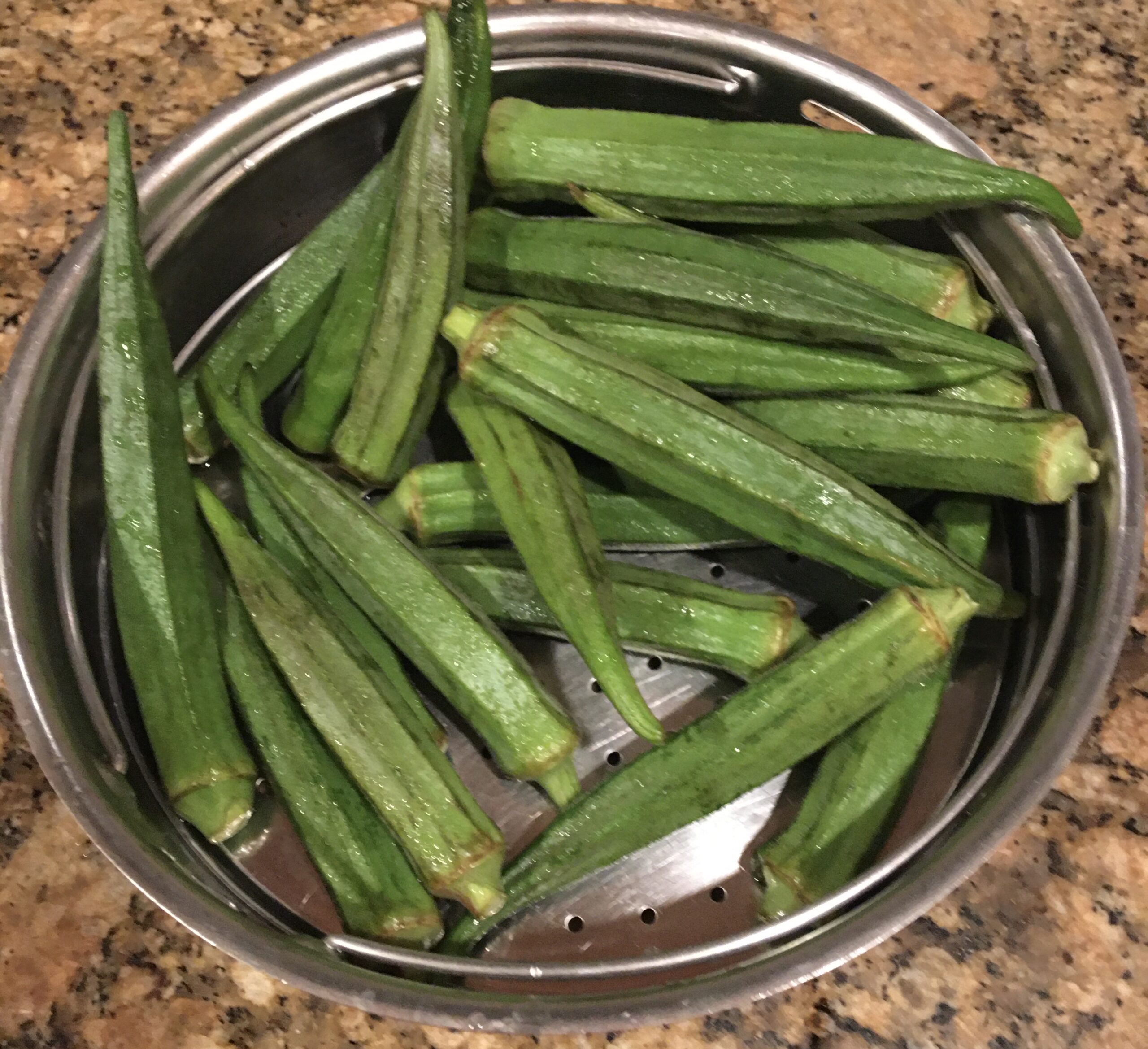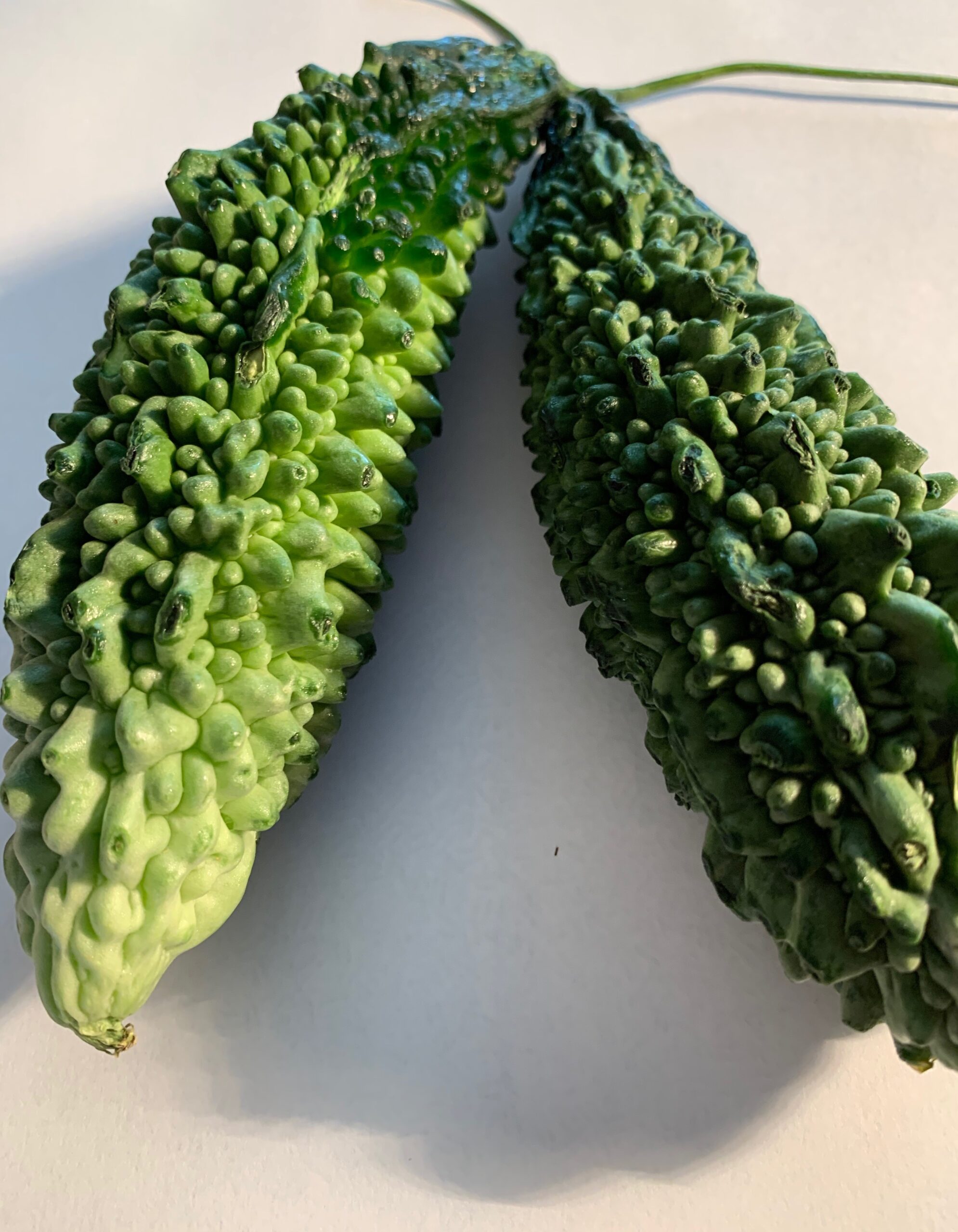Blackeyed peas -scientific name ” Vigna Unguiculata” – are a good source of soluble fiber (regulates the digestive system) that can help prevent type 2 diabetes by keeping blood sugar levels balanced after a meal. When we compare the fiber content of cooked vs. canned beans, the cooked beans have more fiber(5.6 g vs. 4 g ). Regular consumption of beans can alleviate constipation, prevent weight gain, protect from heart disease, diabetes & depression.
History: Eating Blackeyed peas with collard greens in some form started as a custom in the south on New year’s day. It is so pervasive throughout the S.E. that blackeyed peas appear in recipes as varied as Cowboy caviar in Texas, to Hopping john in Alabama to Peas with ham up in North Carolina. According to Southern food researcher John Egertons “Southern Food: at home, on the road, in history” blackeyed peas are associated with a mystical and mythical power to bring good luck. As for Collard-Greens they are green like money and will ensure a prosperous new year. There is evidence that people ate blackeyed peas as early as 500 AD as a part of the Jewish holiday “Rosh Hashanah”, the Jewish new year. But the tradition of eating them with rice is African that spread throughout the south. especially in the Carolinas in the form of Pilaus or rice dishes simmered for a long time with chicken or shrimp. When blackeyed peas were added to pilau it became Hoppin John. A penny or dime was added in the dish when cooking on New year’s day and who-ever received it on their plate was considered to be extra lucky that year.
https://www.southernliving.com/new-years/new-years…
Nutrition Facts of Blackeyed Peas (100g) % DV
| GI =42; GL= 8 | Minerals | Vitamins |
| Energy 336 cal. (17%) | Sodium 16mg (1%) | Folates 633 mcg (158%) |
| Carb. 60 g (46%) | Potassium 1112mg (24%) | Niacin 2.08mg (13%) |
| Protein 23.5g (42%) | Calcium 110mg (11%) | Pantothenic acid 1.5 mg (30%) |
| Total Fat 1.26g (6%) | Copper 0.85 mcg (94%) | Pyridoxine 0.36mg (27%) |
| Cholesterol 0g (0%) | Iron 8.3 mg (107%) | Riboflavin 0.23mg (17%) |
| Fiber 10.6g (28%) | Magnesium 184 mg (46%) | Thiamin 0.85mg (71%) |
| Selenium 9mcg (16%) | Manganese 1.53 mg (66%) | Vitamin C 1.5 mg (2.5%) |
| Zinc 3.4 mg (31%) | Phosphorous 424mg (61%) | Vitamin A 43% |
Health Benefits of Blackeyed Peas
- Blackeyed peas contain fiber that helps prevent type 2 diabetes: 1 cup provides 21% RDA Men 32% RDA women. Good source of soluble fiber that binds to cholesterol and carries it out of the system.
- Blackeyed peas contain Folate prevents anemia: 1 cup provides 52% RDA of folate; it is needed at all ages to build enough red blood cells. Adolescents need it during the growth period. Pregnant women need it during the first few months to lower the risk of birth defects and defects to the brain and the spinal cord.
- Blackeyed peas contain Manganese:1 cup provides 0.94mg or 40% RDA an essential trace element required in small amounts, obtained through diet. Several enzymes need manganese to form cartilage and metabolize carbohydrates, proteins, and fats. It is also an antioxidant that protects mitochondria, the structures inside cells that produce energy. Adequate intake men 2.3mg / women .8 mg .
- Blackeyed peas contain Vitamin A: 1 cup provides 43% RDA; helps with vision and immune system as Beta carotene which gets converted to vitamin A that acts as an anti-oxidant. The first defense against bacteria is to block them – a function of the skin and the mucous membrane lining the respiratory and gastrointestinal tracts. Vitamin A helps to produce mucus and synthesize the protein that maintains the skin. When the immune system responds to germs or infections, it uses white blood cells to kill pathogens and degrade bacteria. These specialized cells depend on vitamin A to function efficiently.
Spice & Herb Power
- Mustard seeds: aids in managing diabetes by protecting against the damage caused by oxidative stress. Being cruciferous has a cholesterol-lowering ability that binds bile acids (comprising cholesterol) in the digestive tract and excretes them.
- Turmeric powder: skincare – constant use of turmeric clears acne scars to make the skin flawless and glowing. Its antiseptic & anti-inflammatory properties accelerate the healing of a cut and soothe skin irritation.
- Asafetida powder reduces headaches: it has anti-inflammatory properties that reduce the inflammation of the blood vessels in the head which in turn reduces headaches.
- Red chili reduces blood pressure and prevents cardiovascular disease with potassium (322 mg) which relaxes blood vessels to create ideal blood flow. It is also an excellent source of riboflavin0.086 mg and niacin1.244mg. Niacin increases the good cholesterol HDL levels thus reducing the risk of heart disease.
- Coconut: boosts the immune system with lipid lauric acid which has antimicrobial and anti-inflammatory properties. Researchers found that lauric acid triggers apoptosis(cell death) in breast and endometrial cancer cells.
- Curry leaves: can aid weight loss with carbazole alkaloids which work against weight gain and help in regulating cholesterol levels in the body.
- Basil leaves are a powerful antioxidant full of polyphenolic flavonoids that protect the body’s structures from cell-damaging free radicals that can oxidize cholesterol in the bloodstream, where it can build up in the arteries to raise the risk of stroke or heart attack. Basil promotes blood flow as a good source of magnesium. As a good source of vitamin A, it promotes healthy eyesight. Eugenol ( a major component of the oil produced by basil leaves) has been shown to be as effective as aspirin and Ibuprofen.
- Parsley leaves: a natural diuretic (helps to eliminate excess fluid without depleting the body of potassium); aids in balancing blood sugar, help with long term weight balance, and also plays a key role in preventing the degenerative effects of diabetes on the liver.
Method to cook Black eyed peas Chundal
- Soak the beans in 2 cups hot water for 2 hrs. or in cold water overnight.
- Rinse 3 times; cook with cold water in a saucepan on stove.(45 min.)
- Alternately cook beans in a pressure cooker or microwave. (20-30 min.)
- * Heat the oil in a frying pan; add seasoning materials.
- Add spices after mustard seeds splutter.
- Drain beans, add to fried spices in the pan and stir well. (5 min.)
- Remove from heat and garnish with coconut + one of the herbs.
Alternate method for Spicy Black-eyed Peas
- Peel and chop 1 onion fine.
- Heat oil, add onions & sauté until translucent.
- Add cooked beans and stir until all the water has evaporated. (5 min.)
- Dry roast the following spices and powder in a grinder:
- 6 cloves, 4 cardamoms, 1″ cinnamon, 1 tsp. poppy and fennel seeds.
- Add spices to beans, garnish with coconut + one of the herbs. (5 min.)
Using Insta pot pressure cooker
- Sauté onions first in oil with spices; add to blackeyed peas in the One-pot container. add 1 cup water, mix well and cover with the lid. Allow pressure to build up, hold for 3-5 min. and remove from heat. Open after cooling. Garnish with coconut, lemon juice, curry, basil, or parsley leaves.
Serve Blackeyed beans Chundal as a main dish, snack, or with Quinoa, Lemon Rice, Pasta, Chapatis, Naan,
TIPS
Time Saver: Soak beans 2 days before, drain water, and freeze
Quick Beans: Drain canned blackeyed/ Garbanzo or red beans and follow the above recipe from*e








